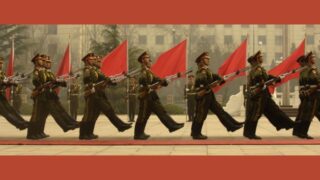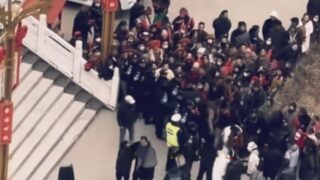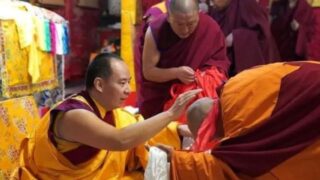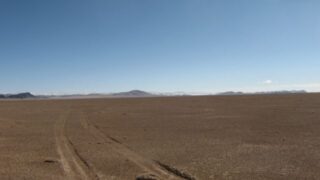Should you really join tours of an occupied country organized by the occupying power? Perhaps not, but if you insist on going there, here are some tips.
by Ugyen Gyalpo


When China says Tibet is open to the world for tourism, it harkens back to the crescendo of advertisements on the TV screens about Disney theme parks being opened again after the COVID lockdowns. Tibet is sold to the world as Disneyland is, and our people, heritage, and culture are paraded in all forms of cultural appropriation.
A special permit over the China visa is required to travel to Chinese-occupied Tibet. The CCP has carved Tibet into two halves, and to fool the world has presented the TAR (Tibet Autonomous Region) as Tibet. In fact, TAR is just one third of Tibet. The birthplace of the Dalai Lama, the province of Amdo and Kham, has been cut off from the TAR like an umbilical cord to eradicate any trace or echo of a Greater Tibet, i.e., one that encompasses all the three provinces of historical Tibet.
Thousands of Han Chinese travel to Tibet every year, often behaving recklessly towards the cultural feelings of the Tibetans and their Buddhist faith. At the Jokhang or at the Potala palace, Chinese are seen walking unrepentantly in the wrong direction while doing “kora,” a Buddhist circumambulation.
Few months ago a video went viral showing a passing Tibetan grandmother jumping in between two Han Chinese dressed up in confused Tibetan attire. She corrected the woman whom she had seen rotating the prayer wheel in the wrong way.
While India is on the verge of removing its colonial name and return to “Bharat,” China had nefariously embarked upon calling occupied Tibet “Xizang,” in all its official documents and in the ongoing rampant Sinicization campaign.
But what about foreign tourists? Unlike in other world tourist destinations, where they can roam around freely, in Tibet they cannot. Remember, Tibet is under Chinese occupation. The restive area has seen over 150 self-immolations to date, and some major protests, the last of them in 2008. Tibet is the most sensitive area for the CCP, and also one of its most prized colonial pillages. The loot and pillage of Tibet is the main fuel that drove the Chinese economy to stratospheric heights, leaving the areas where rich Tibet’s precious natural resources are located dry, razed, and full of craters.
In Tibet, any tour is a state-guided tour controlled by the CCP. You cannot escape and visit locations that are not part of the itinerary approved by the CCP. Wandering off around restricted areas might put you at risk of having to pay a huge fine, and even of being detained or deported.
For the sake of security, tourists in Tibet are sometimes mistreated. One reported to me that he got sick and was not allowed to stay back in the hotel. He had to follow the itinerary and leave the hotel with the group.
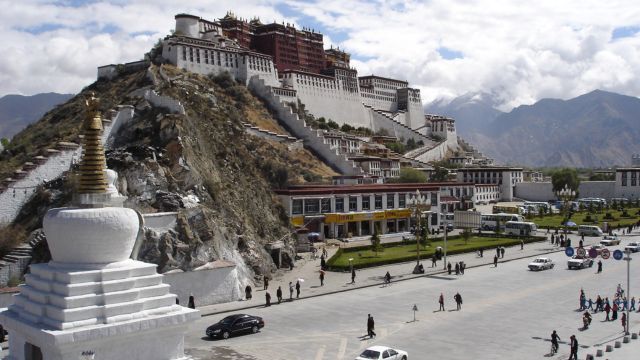

Western tourists are scrutinized before arrival and surveilled. While in occupied Tibet, tourists are fed with a distorted history of the country. They are told that Tibet is an inalienable part of China since antiquity and that the Dalai Lama was a slave owner.
Tibetans in Tibet are basically prisoners in their own land. The majority of profitable businesses are owned and operated by Han Chinese. Chinese government incentivizes Han migration into Tibet within the framework of a long-term strategy that has been ongoing for decades now, with the aim of converting the Tibetans into a minority in their own county. The CCP also helps Han immigrants with capital for launching businesses. They operate with impunity and trample over the native Tibetans bullishly. For every one Tibetan walking in the streets of Lhasa, you might encounter ten Chinese people or more.
Citizens of the world, do not be fooled when you see many happy faces of Tibetans in travel blogs! Everything is being orchestrated. This is similar to the faces of North Koreans in the videos of Kim’s parades. These faces are supposed to express joy, exuberance, and jubilation—but it’s all fake! It is just propaganda and behind these faces the reality is made out of fear, hunger, and abject poverty.
The Canadian government recently issued a travel advisory to its citizens planning to travel to Tibet and East Turkestan when China opened up Occupied Tibet and what it calls Xinjiang to selected tourists.
Should tourists really travel to Tibet when the Tibetans are prisoners in their own land? Perhaps not. But if you still want to travel, I would ask you to try to escape the state-guided travel group, go beyond the designated tourist sites, and speak with and hear from actual Tibetans—without taking videos of them, since that would put their very life in jeopardy. Then, when you come back, please write and enlighten the world about the real Tibet hidden behind those smiles.


